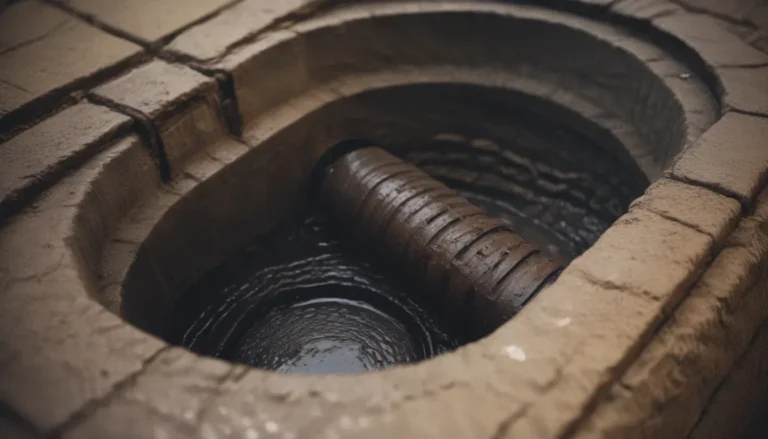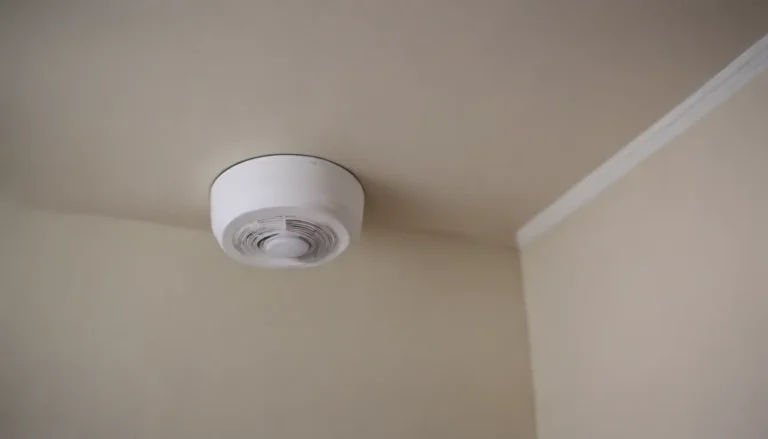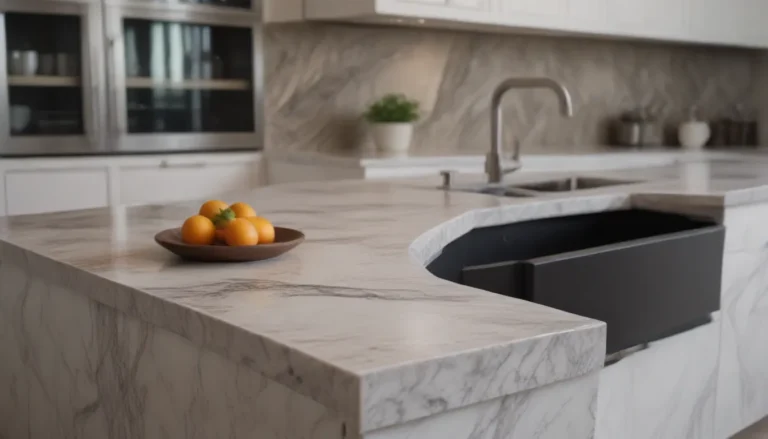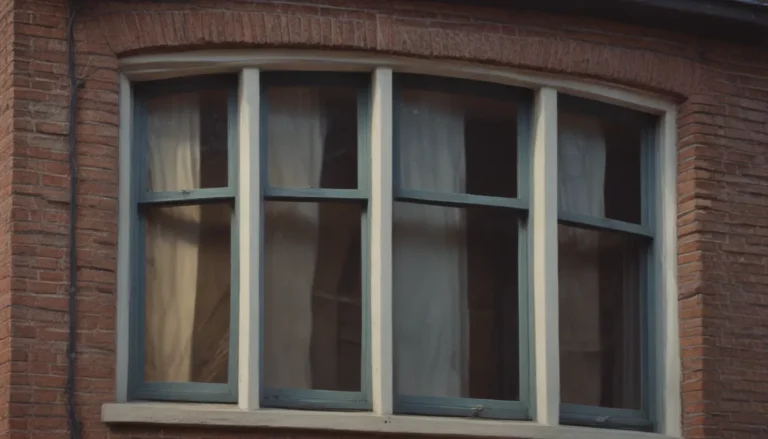The Ultimate Guide to Choosing Between Carpet and Hardwood Flooring
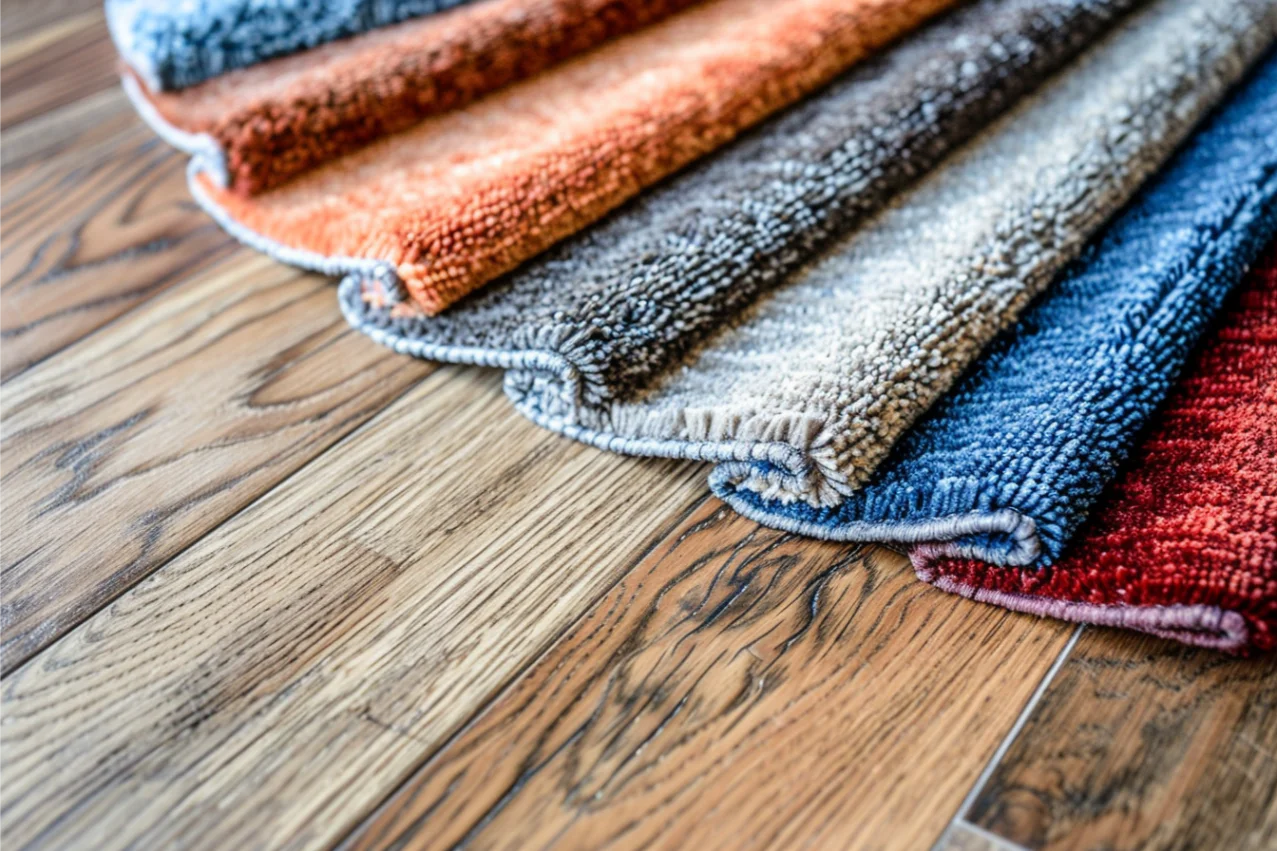
When it comes to choosing the perfect flooring for your home, the decision often comes down to two popular options: carpet and hardwood. Both have their unique advantages and disadvantages, and the choice ultimately depends on your personal preferences, lifestyle, and budget. In this comprehensive guide, we’ll explore the key factors to consider when deciding between carpet and hardwood flooring, helping you make an informed decision that will enhance the comfort, style, and value of your home.
Comfort and Warmth
One of the primary considerations when choosing between carpet and hardwood is the level of comfort and warmth you desire in your living space.
Carpet
- Carpet provides a soft, plush surface that feels cozy and warm underfoot, making it an excellent choice for bedrooms, living rooms, and playrooms.
- The insulating properties of carpet help to regulate room temperature, keeping your feet warm in the winter and cool in the summer.
- Carpet also offers a certain level of sound absorption, reducing noise transmission between rooms and creating a quieter, more peaceful environment.
Hardwood
- While hardwood floors may not be as soft as carpet, they still offer a comfortable and stable surface to walk on.
- Hardwood floors can be paired with area rugs to add warmth and softness in specific areas, such as beside the bed or in front of the couch.
- In warmer climates or during the summer months, hardwood floors can feel cooler and more refreshing than carpet.
Durability and Maintenance
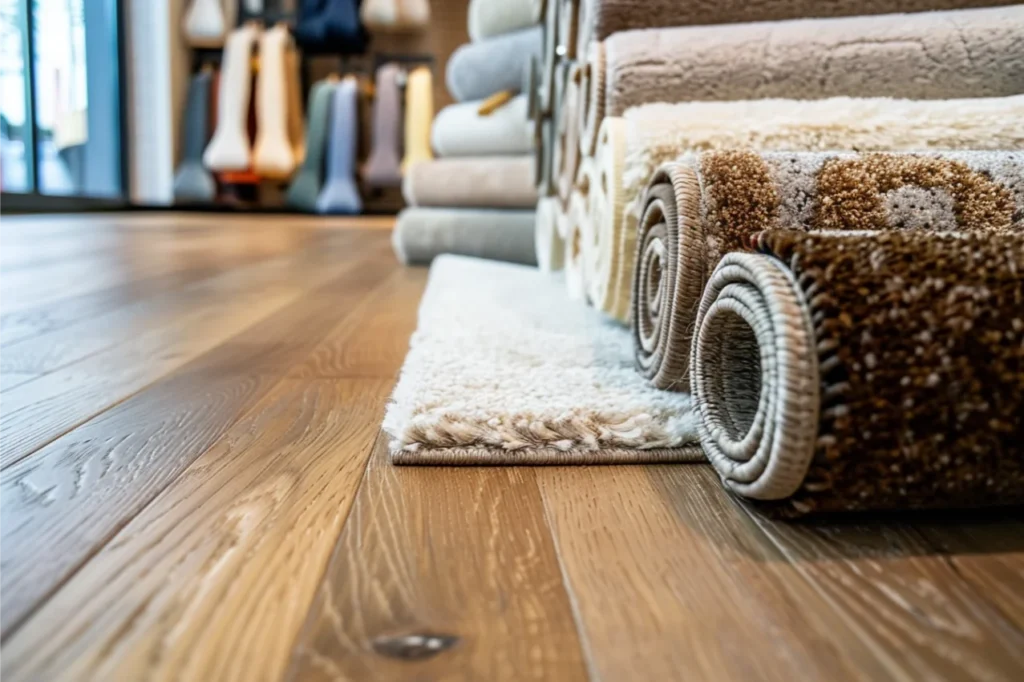
Another essential factor to consider is the durability and maintenance requirements of each flooring option.
Carpet
- Carpet is generally less durable than hardwood and may show signs of wear and tear more quickly, especially in high-traffic areas.
- Regular vacuuming and periodic deep cleaning are necessary to maintain the appearance and hygiene of carpet, as it can trap dust, allergens, and pet hair.
- Stains and spills can be more challenging to remove from carpet, and some may leave permanent marks.
Hardwood
- Hardwood floors are known for their durability and can last for decades with proper care and maintenance.
- Scratches, dents, and wear can occur on hardwood floors, but these can often be sanded and refinished to restore their original beauty.
- Hardwood floors are easier to clean than carpet, requiring only regular sweeping, dusting, or mopping to maintain their appearance.
- Spills and stains can be quickly wiped away from hardwood floors, making them a more hygienic option, especially for households with children or pets.
Aesthetics and Versatility
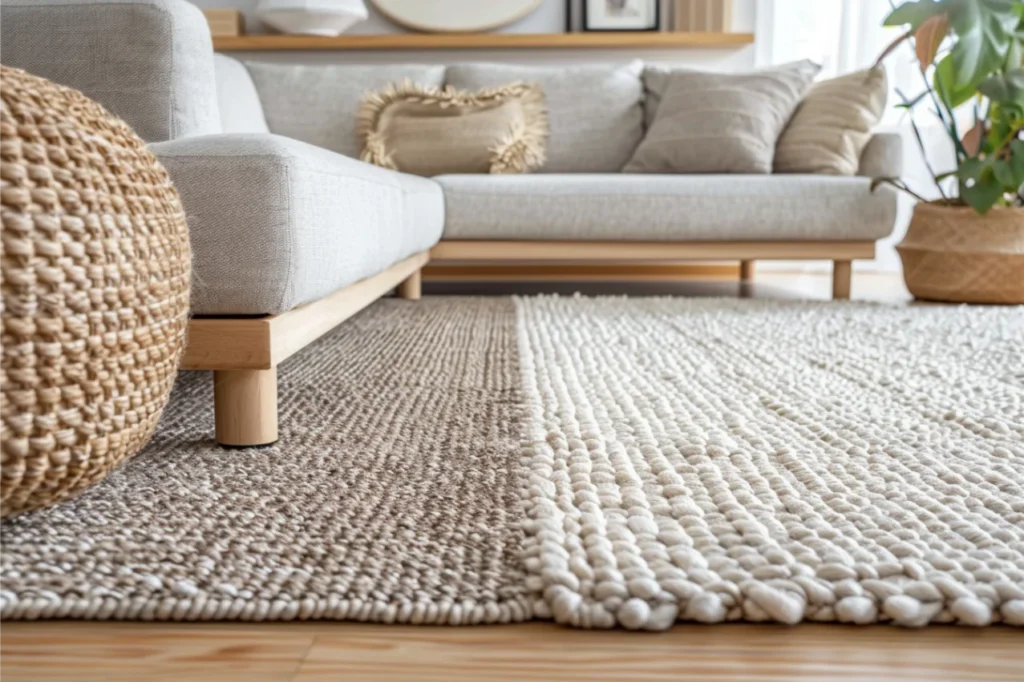
The visual appeal and versatility of your flooring choice can have a significant impact on the overall look and feel of your home.
Carpet
- Carpet comes in a wide range of colors, textures, and patterns, allowing you to customize the look of your space to suit your personal style.
- Carpet can create a cozy, inviting atmosphere, making it an excellent choice for bedrooms, living rooms, and other spaces where comfort is a priority.
- However, carpet may not be as versatile as hardwood when it comes to adapting to different design styles, and it may require more frequent updates to keep up with changing trends.
Hardwood
- Hardwood floors offer a classic, timeless look that can adapt to various design styles, from traditional to contemporary.
- The natural beauty of wood grains and patterns adds warmth and character to any room, and can be enhanced with different stains and finishes.
- Hardwood floors can be paired with a variety of area rugs, furniture, and decor elements to create a custom look that reflects your personal taste.
- The versatility of hardwood allows you to change the look of your space over time without the need to replace the flooring itself.
Health and Allergies
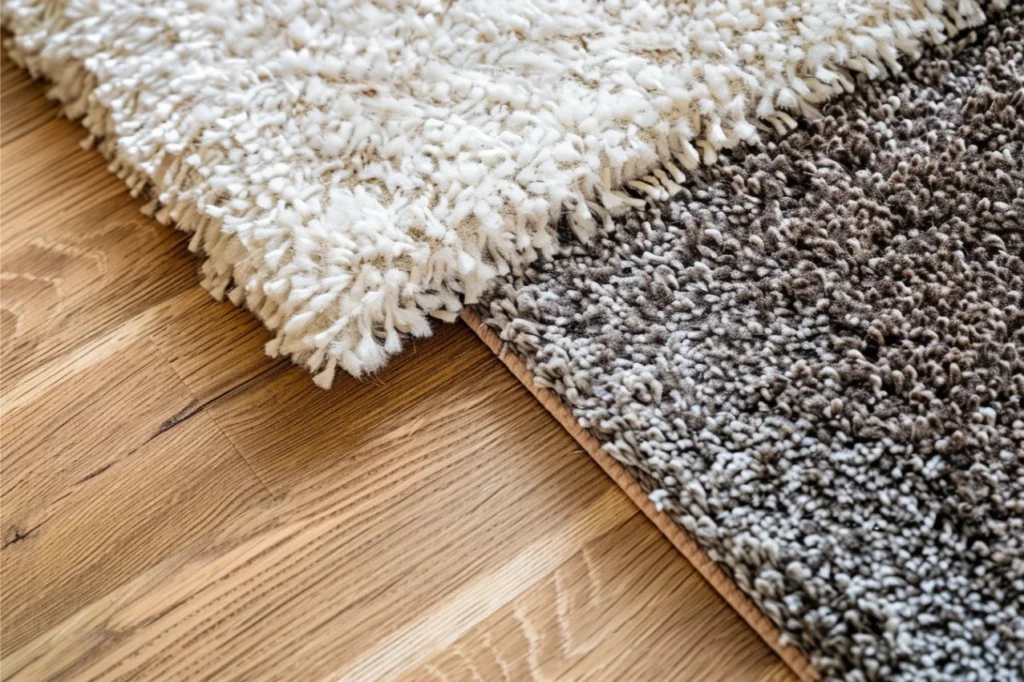
If you or a family member suffer from allergies or respiratory issues, your flooring choice can have a significant impact on your indoor air quality and overall health.
Carpet
- Carpet fibers can trap dust, pet dander, and other allergens, which can be released into the air when disturbed by walking or vacuuming.
- Regular deep cleaning and the use of a high-quality vacuum with a HEPA filter can help to reduce allergens in carpet, but may not eliminate them entirely.
- Carpets can also harbor mold and mildew if exposed to moisture, which can exacerbate respiratory issues and cause unpleasant odors.
Hardwood
- Hardwood floors are a better choice for individuals with allergies or respiratory sensitivities, as they do not trap allergens and are easier to keep clean.
- Dust, pet dander, and other particles can be easily swept, dusted, or mopped away from hardwood floors, improving indoor air quality.
- Hardwood floors are also less likely to harbor mold and mildew, as they do not retain moisture like carpet fibers.
Cost and Return on Investment
When making a decision between carpet and hardwood, it’s essential to consider both the initial cost and the long-term return on investment.
Carpet
- Carpet is generally less expensive than hardwood, making it a more budget-friendly option for those looking to update their flooring.
- The cost of carpet can vary depending on the quality, material, and style chosen, with higher-end options being more expensive.
- Carpet may need to be replaced more frequently than hardwood, typically every 5-10 years, depending on wear and tear.
- The return on investment for carpet is generally lower than hardwood, as it does not add as much value to a home and may need to be replaced before selling.
Hardwood
- Hardwood floors are typically more expensive than carpet, with costs varying depending on the type of wood, finish, and installation method.
- However, hardwood floors are a long-term investment that can last for decades with proper care and maintenance, potentially saving money in the long run.
- Hardwood floors can be sanded and refinished multiple times, allowing them to be updated and refreshed without the need for complete replacement.
- The return on investment for hardwood floors is generally higher than carpet, as they are a desirable feature that can increase the value and appeal of a home to potential buyers.
Room-by-Room Considerations
When deciding between carpet and hardwood, it’s important to consider the specific needs and functions of each room in your home.
Bedrooms
- Carpet is a popular choice for bedrooms, as it provides a soft, warm, and comfortable surface for bare feet.
- The sound-absorbing properties of carpet can also create a quieter, more peaceful sleeping environment.
- However, if you or a family member have allergies, hardwood floors with an area rug may be a better option for improved air quality.
Living Rooms
- Both carpet and hardwood can work well in living rooms, depending on your personal preferences and design style.
- Carpet can create a cozy, inviting atmosphere and provide a comfortable surface for sitting on the floor or playing with children.
- Hardwood floors can give a living room a more elegant, formal feel and are easier to clean and maintain in high-traffic areas.
Kitchens and Bathrooms
- Hardwood floors are generally not recommended for kitchens and bathrooms due to the high moisture levels and potential for water damage.
- If you prefer the look of wood in these areas, consider water-resistant alternatives like engineered hardwood, luxury vinyl plank, or tile that mimics the appearance of wood.
Basements and Below-Grade Spaces
- Carpet can be a suitable option for basements and below-grade spaces, as it can provide insulation and warmth in areas that may be prone to dampness or coolness.
- However, if your basement is prone to moisture issues or flooding, hardwood or carpet may not be the best choice, and you may want to consider moisture-resistant flooring options like luxury vinyl plank or tile.
Installation and Replacement Considerations
When choosing between carpet and hardwood, it’s important to consider the installation process and the potential for future replacements.
Carpet
- Carpet installation is generally quicker and less disruptive than hardwood, as it can often be installed directly over existing flooring.
- However, carpet may need to be replaced more frequently than hardwood, which can be a more involved and costly process.
- When replacing carpet, you may need to remove and dispose of the old carpet and padding, which can be a time-consuming and labor-intensive task.
Hardwood
- Hardwood floor installation is typically a more involved and time-consuming process than carpet, as it may require the removal of existing flooring and the preparation of the subfloor.
- However, hardwood floors can last for decades with proper care and maintenance, potentially saving you the hassle and expense of frequent replacements.
- If your hardwood floors become damaged or worn over time, they can often be sanded and refinished to restore their original beauty, rather than requiring complete replacement.
Environmental Impact and Sustainability
For those concerned about the environmental impact and sustainability of their flooring choices, there are several factors to consider when choosing between carpet and hardwood.
Carpet
- Carpet is typically made from synthetic materials like nylon, polyester, or polypropylene, which are derived from non-renewable resources and can have a larger carbon footprint than natural materials.
- Some carpets may contain volatile organic compounds (VOCs) or other chemicals that can off-gas and negatively impact indoor air quality.
- However, there are now more eco-friendly carpet options available, such as those made from recycled materials or natural fibers like wool or sisal.
Hardwood
- Hardwood floors are made from a renewable resource and can be a more sustainable choice than synthetic flooring materials.
- Many hardwood flooring options are now sourced from responsibly managed forests and certified by organizations like the Forest Stewardship Council (FSC).
- Hardwood floors can also be recycled or repurposed at the end of their lifecycle, reducing waste and environmental impact.
- However, it’s important to consider the environmental impact of the manufacturing process and any chemicals or finishes used in the production of hardwood flooring.
Conclusion
Choosing between carpet and hardwood flooring ultimately depends on your personal preferences, lifestyle, budget, and the specific needs of each room in your home. By considering factors like comfort, durability, aesthetics, health, cost, and environmental impact, you can make an informed decision that will enhance the beauty, functionality, and value of your living space for years to come.
Remember, there is no one-size-fits-all solution when it comes to flooring, and what works best for one household may not be the ideal choice for another. Take the time to carefully evaluate your options, consult with flooring professionals, and weigh the pros and cons of each material before making your final decision. With the right flooring choice, you can create a comfortable, stylish, and inviting home that reflects your unique personality and lifestyle.

